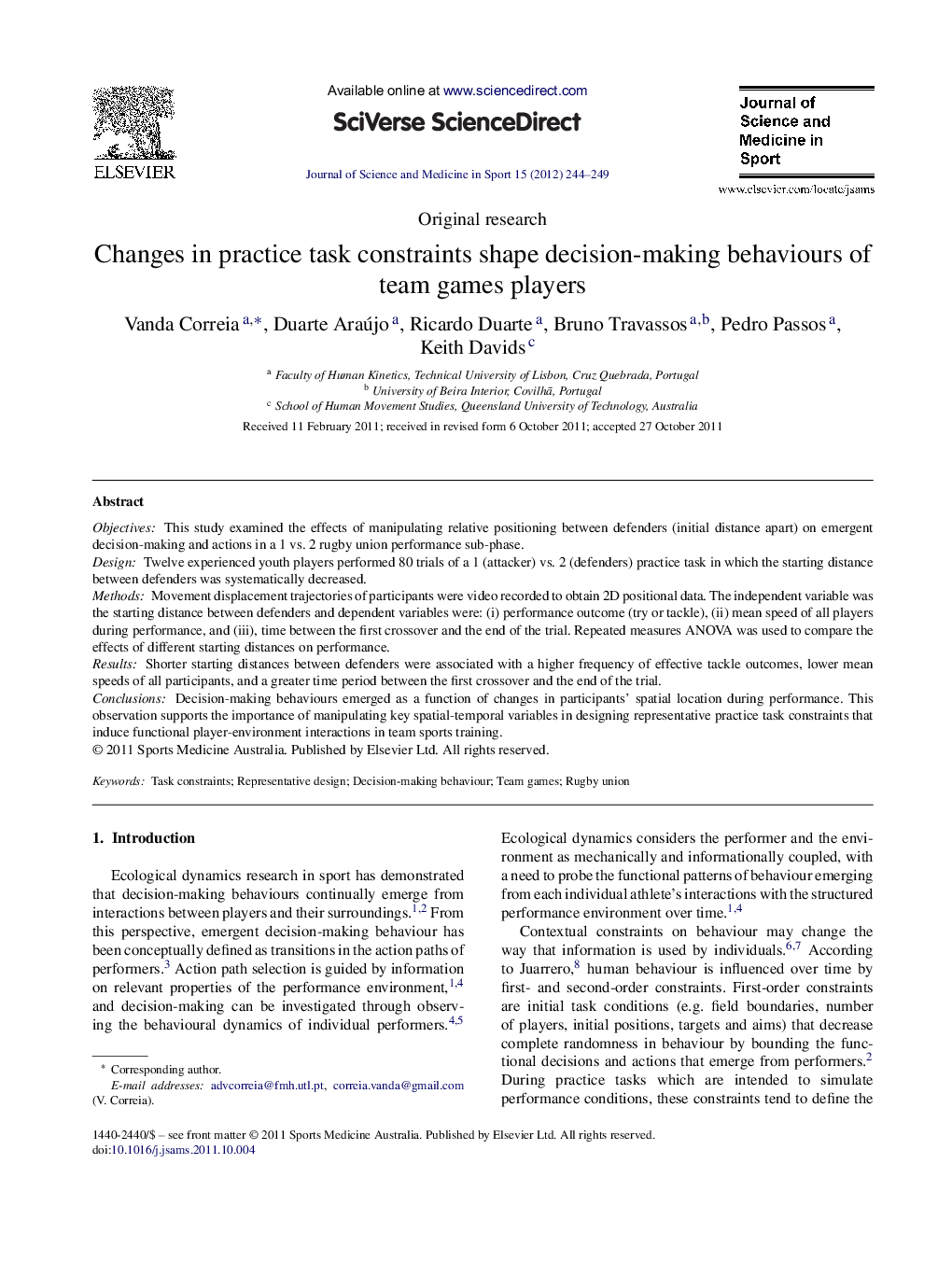| Article ID | Journal | Published Year | Pages | File Type |
|---|---|---|---|---|
| 2708075 | Journal of Science and Medicine in Sport | 2012 | 6 Pages |
ObjectivesThis study examined the effects of manipulating relative positioning between defenders (initial distance apart) on emergent decision-making and actions in a 1 vs. 2 rugby union performance sub-phase.DesignTwelve experienced youth players performed 80 trials of a 1 (attacker) vs. 2 (defenders) practice task in which the starting distance between defenders was systematically decreased.MethodsMovement displacement trajectories of participants were video recorded to obtain 2D positional data. The independent variable was the starting distance between defenders and dependent variables were: (i) performance outcome (try or tackle), (ii) mean speed of all players during performance, and (iii), time between the first crossover and the end of the trial. Repeated measures ANOVA was used to compare the effects of different starting distances on performance.ResultsShorter starting distances between defenders were associated with a higher frequency of effective tackle outcomes, lower mean speeds of all participants, and a greater time period between the first crossover and the end of the trial.ConclusionsDecision-making behaviours emerged as a function of changes in participants’ spatial location during performance. This observation supports the importance of manipulating key spatial-temporal variables in designing representative practice task constraints that induce functional player-environment interactions in team sports training.
